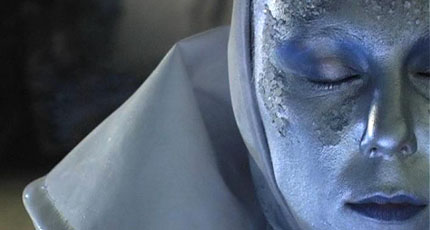News
- Tania Altamirano López
MAPA D2
ExpiredArtists and researchers from Portuguese and Spanish speaking countries get together through a virtual platform in order to exchange information on dancing with technological mediation.

To dance, interacting with resources created by technology. This is the new challenge of many artists and researchers. Nowadays information and communication technologies are a means of artistic expression, which is why it became necessary to generate a space to bring together all those who already work on dancing with technological mediation, and those who study dancing or wish to do research on it. Within this scenario the MAPA D2 community emerges, aiming to be an articulator between the cultural and academic worlds.
Since April 2009, those who perform or study this kind of dancing can have access to a virtual platform for dissemination and to educational, technological and marketing support in the field of dancing and to performances with technological mediation in Portuguese and Spanish speaking countries. Participation requires registration and provides information about participating groups, their events, rooms, videos, bibliographical material, and allows participation in discussion forums and access to live events. All these resources are made possible thanks to RedCLARA.
The PhD Professor Ivani Santana is the director of the community, which has nine coordinators in eight countries: Uruguay, Paraguay, Chile, Argentina, Bolivia, Mexico, Portugal and Spain. “The idea of creating this community came out of the need to map Brazil, a country with a continental size, in order to find the people who work on technological dancing”, indicates Ivani. Today, the community is growing: the platform brings together 51 artists, 12 researchers and 17 institutions from 10 countries. “Our idea, as MAPA, is to identify who is doing dancing with technological mediation, provide guidance on where to study and how to show the result of this work. We want to raise the flag of collaboration”, she explains.
On Mariana Arteaga’s opinion, director of the FEDAME Festival and former coordinator of MAPA D2 in Mexico, artistic growth through exchange will encourage discussion forums where it will be possible to learn more about that way of approaching art and about the society we live in. “The community’s potential is very big. We are still working to develop groups in our countries. The generation of knowledge is very interesting and is fundamental to establish new forms of cooperation”, added the MAPA D2 coordinator in Uruguay, Diego Carrera.
But the expectations are even higher for the MAPA D2 community. The coordinator in Argentina, Alejandra Ceriani, states that MAPA D2 will expand the network, the new forms of production and ways of thinking about the body’s movement and image, but mainly the platform will be able to contribute to getting the community of dancing mediated by technology to turn their eyes in each country towards artistic policymaking, thus making dancing become more aware of its role in the culture of hybridisation.
Dancing and interacting
Art gains a lot of resources through advanced networks. Artists in different countries can dance and interact with network users in a virtual stage in real time. A recent example of this application was the e-Pormundos Afeto telematic dancing show, which brought together in a virtual 3D environment dancers who were in Buenos Aires (Argentina) and Barcelona (Spain) with a Lego MXT robot that was in Salvador (Brazil) and with avatars created by those who participated in the show through the network. The performances, which were transmitted on 4 and 5 September over the MAPA D2 community’s website thanks to the efforts of the Brazilian academic network, RNP, and the support from Innova|Red, its Argentinean peer, RedCLARA and the I2Cat Foundation (Catalonia, Spain), represent one of the results of the Work Group on Digital Media and theArts, funded by RNP and constituted by the Poetic-Technological Research Group (Federal University of Bahia), the Digital Video Laboratory (Federal University of Paraíba) and NatalNet (Federal University of Rio Grande do Norte). The work included the participation of the Spanish band Kónic Thtr, directed by Rosa Sánchez and Alain Baumann.
The MAPA D2 community strengthens the relations and associations between the groups that study and perform dancing with technological mediation, thus increasingly promoting examples like this. With this mission, its coordinators organised their first face-to-face meeting during the 3rd International Seminar on Dancing, Drama and Performance, held from 3 to 7 November last year in Salvador (Brazil). With the support of RedCLARA, the Cultural Foundation of the Bahia State, the Brazilian Council for Scientific and Technological Development, eight coordinators were able to participate in the meeting “which strengthened the community’s links, helped to solve some demands and to plan important actions, like the definition of the council of responsible coordinators and the community’s shared management”, pointed out Santana.
More information in:
http://www.mapad2.ufba.br/
http://www.poeticatecnologica.ufba.br/site/




